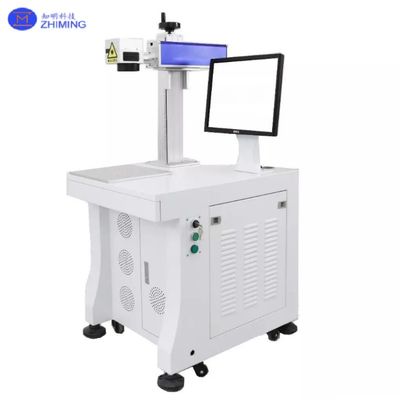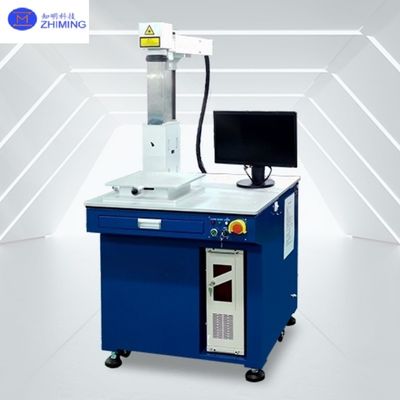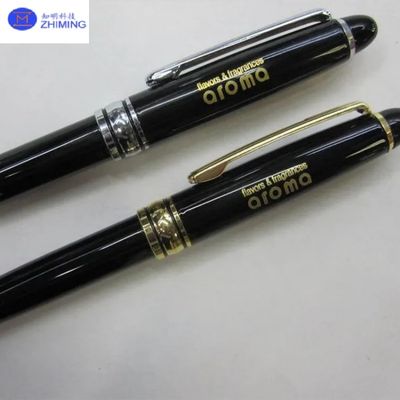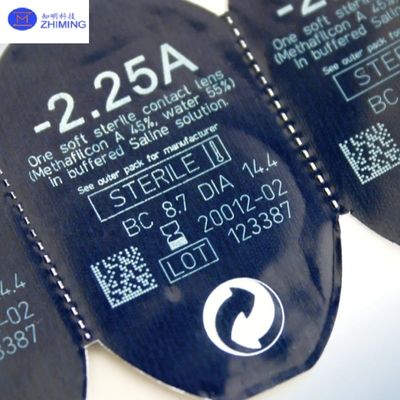Compact Fiber Laser Engraving Machine Clean Maintenance Free Marking for Workshops Small Businesses
Product Details:
| Place of Origin: | China |
| Brand Name: | ZMSH |
| Model Number: | equipment |
Payment & Shipping Terms:
| Minimum Order Quantity: | 1 |
|---|---|
| Price: | 500 USD |
| Packaging Details: | custom cartons |
| Delivery Time: | 4-8 weeks |
| Payment Terms: | T/T |
| Supply Ability: | By case |
|
Detail Information |
Product Description
Overview of Fiber Laser Engraving Machines
Fiber laser engraving machines represent a highly advanced solution for permanent, high-definition marking on metals and certain non-metallic materials. Using state-of-the-art laser technology, these machines deliver exceptional marking precision at impressive speeds, all while operating with virtually no maintenance and zero consumables.
At the core of the machine is a solid-state fiber laser source, which emits a tightly focused laser beam through fiber-optic cables. This beam, typically in the 1064nm wavelength, interacts with the surface of the material by producing localized heating, which results in various surface changes such as discoloration, engraving, ablation, or annealing. The marking process is controlled by high-speed scanning mirrors and powerful software that allows for precise customization of text, images, data matrices, and more.
One of the key advantages of fiber laser systems is their compatibility with a wide range of materials including stainless steel, aluminum, titanium, brass, gold, anodized aluminum, and some high-performance plastics. They are ideal for creating long-lasting marks that are resistant to abrasion, chemicals, and UV exposure.
These machines are commonly used in modern production environments, from small businesses to large-scale automated factories. Their compact design, long operational life, and excellent performance make them suitable for a broad spectrum of applications, including product identification, compliance labeling, batch coding, and decorative engraving in industries like consumer electronics, aerospace, automotive components, and precision instruments.
How Fiber Laser Marking Technology Works
Fiber laser marking technology is based on the concept of converting electrical energy into highly focused optical energy that interacts with the surface of a material to produce a visible, durable mark. This process involves no mechanical contact or consumable materials, making it clean, efficient, and low-maintenance.
The system begins with a laser source that uses an optical fiber core doped with rare-earth elements such as ytterbium (Yb). When pumped with diode lasers, the ytterbium atoms are excited and emit a high-intensity laser beam at a wavelength of 1064 nanometers. This light is transmitted through fiber optics to a set of high-speed mirrors (galvanometers), which precisely control the movement of the beam.
Once focused by an F-theta lens onto the target surface, the laser beam interacts with the material through rapid, localized heating. This causes various physical or chemical surface reactions, such as:
-
Engraving: material is removed to create depth.
-
Annealing: a color change occurs due to controlled oxidation.
-
Foaming or Melting: applicable to plastics or coated surfaces.
The fiber laser’s high beam quality allows for ultra-fine resolution and high marking speeds. It can engrave detailed graphics, tiny characters, 2D data matrix codes, and serial numbers with micron-level accuracy. Because the energy is concentrated into such a small point, thermal stress on surrounding areas is minimal.
This precise, digitally controlled process enables integration into high-volume, automated manufacturing lines, making fiber laser marking a key technology in industrial part identification, compliance labeling, and traceability systems.
Where Fiber Laser Marking Machines Are Used
Fiber laser marking machines are valued for their incredible speed, precision, and ability to mark complex designs permanently on a wide variety of materials—especially metals. Their compact design, durability, and automation compatibility have made them essential tools in modern industrial and commercial production settings.
Typical Use Cases Include:
-
Metal Processing & Fabrication:
Ideal for marking stainless steel, aluminum, carbon steel, and titanium plates or components with part numbers, company logos, compliance codes, and decorative patterns. Common in hardware manufacturing and custom metalwork. -
Electronics & Electrical Equipment:
From engraving serial numbers on connectors to labeling circuit boards and smartphone frames, fiber lasers offer clean and heat-controlled marking even in dense layouts and miniature formats. -
Tool Manufacturing & Mechanical Parts:
Wrenches, calipers, drill bits, and molds often require permanent marks for calibration, model identification, or anti-counterfeit purposes. Fiber lasers deliver sharp, legible results that withstand heavy industrial use. -
Jewelry, Watches & Craft Items:
For fine engraving on gold, silver, stainless steel, and titanium, fiber lasers provide unmatched detail and speed, making them popular among jewelers for brand marks, custom messages, and serial numbers. -
Medical & Laboratory Equipment:
Labels on medical scissors, implants, or syringes must remain intact through cleaning and sterilization. Fiber lasers create marks that resist abrasion, corrosion, and chemical exposure. -
Automated Production Lines:
Fiber lasers can be integrated into automated systems for high-speed marking on fast-moving parts like bearings, housings, and fasteners. This improves productivity and enables full traceability. -
Identification & Compliance Labeling:
Fiber lasers are widely used for marking products with industry-required data such as CE marks, RoHS labels, batch numbers, expiration dates, or manufacturer information—especially in export-oriented production.
Thanks to their flexibility, minimal maintenance, and energy efficiency, fiber laser engravers continue to expand their footprint across both heavy and light industries, becoming a core tool in Industry 4.0 smart manufacturing systems.
Common Questions About Fiber Laser Engraving Machines
Q1: What types of industries use fiber laser machines?
A: Fiber laser engraving is widely used in automotive, aerospace, electronics, medical devices, tool manufacturing, and luxury goods. These machines are trusted for part labeling, compliance marks, product coding, and custom engraving.
Q2: Is fiber laser marking suitable for both light and deep engraving?
A: Yes. Lower power settings can achieve fine surface marking or color changes (annealing), while higher power or slower speeds allow deep engraving into metals and hard plastics.
Q3: What is the difference between fiber, UV, and CO₂ laser marking?
A:
-
Fiber lasers are best for metals and industrial plastics.
-
UV lasers are suitable for sensitive or transparent materials like glass or film.
-
CO₂ lasers are better for organic materials such as wood, paper, and leather.
Q4: How fast is the marking process?
A: Marking speeds vary depending on material, power, and complexity, but fiber lasers can reach speeds over 7000 mm/s, making them highly efficient for mass production.
Q5: Can the system generate serial numbers automatically?
A: Yes. Most fiber laser software supports dynamic data input, automatic serial number creation, date/time codes, and even database integration for batch marking.
Q6: Do fiber lasers damage the material surface?
A: No, not under normal parameters. The energy is highly controlled and localized, so there is minimal heat-affected zone (HAZ). It marks without distorting or weakening the material.
Q7: Is training required to operate the machine?
A: Basic training is recommended, especially for adjusting laser parameters and using design software effectively. However, the systems are designed to be easy to learn and use.
Q8: Can the machine be used in small workshops or home businesses?
A: Absolutely. Many compact models are designed for entrepreneurs, custom engravers, and small-scale production. They’re quiet, efficient, and space-saving.







